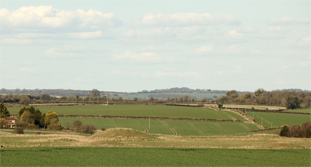Nationally important archaeology: Scheduled Monuments
 The Cranborne Chase and West Wiltshire Downs has large numbers of nationally important archaeological sites which are protected through 'scheduling'.
The Cranborne Chase and West Wiltshire Downs has large numbers of nationally important archaeological sites which are protected through 'scheduling'.
Scheduling refers to the legal system for protecting nationally important archaeological sites in England. English Heritage takes the lead in identifying sites in England which should be placed on the schedule by the Secretary of State for Culture, Media and Sport. Scheduling is carefully restricted to the most important site for each type of monuments. The national importance of a monument is assessed using a set of criteria which includes factors such as period, rarity, documentation, group value, survival and condition, fragility and vulnerability, diversity and potential.
There are 556 Scheduled Monuments, often called Scheduled Ancient Monuments or SAMs, in the AONB. These are dominated by Prehistoric sites and in particular Bronze Age round barrows. The downland areas have high concentrations of Prehistoric sites which are scheduled and these tend to focus on known centres of activity for example, Knowlton Henge or the Dorset Cursus. There are also Prehistoric and Roman settlements and field systems in these area which are designated. The chalk escarpments are notable for the density of Prehistoric hillforts, field systems and linear ditches and medieval strip lynchets. In contrast, in the chalk river valleys and the Vale of Wardour designated sites tend to date from later periods and include deserted medieval settlements, former abbey precincts, moated manors, and motte and bailey castles. The military cap badges at Fovant are a rare example of a twentieth century monument protected as a Scheduled Monument.
Download a short introduction to the designated heritage of the AONB (PDF 753 KB).
This document forms part of the wider AONB Historic Environment Action Plans.
